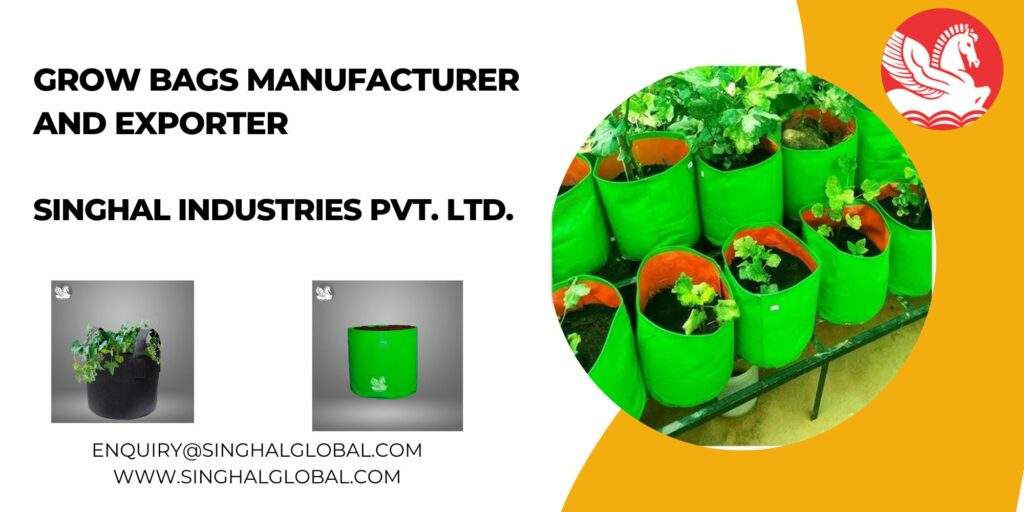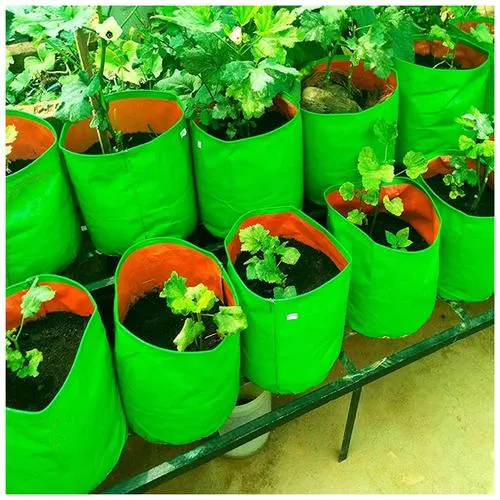
Benefits of Using Grow Bags for Plants

Introduction
In today’s fast-paced world, gardening enthusiasts and professionals alike are continually seeking innovative and practical solutions to improve their gardening experience. One such solution gaining popularity is the use of grow bags. These versatile containers have emerged as a game-changer for plant cultivation, offering a myriad of benefits that cater to both novice gardeners and seasoned horticulturists. In this comprehensive guide, we will delve into the various advantages of using grow bags for plants and how they can elevate your gardening endeavors to new heights.
- Enhanced Aeration and Root Health
Grow bags are designed with a unique fabric material that fosters excellent aeration throughout the root zone. Unlike traditional pots, which can often lead to root circling and poor air circulation, grow bags encourage the development of a robust root system. The breathable fabric ensures that excess water drains efficiently, preventing waterlogging and root rot. As a result, plants grown in grow bags tend to have healthier, more extensive root structures, which directly contributes to enhanced nutrient uptake and overall plant vitality. - Improved Drainage
Proper drainage is essential for the success of any garden. Grow bags are specifically engineered to offer superior drainage capabilities, making them ideal for various plant species. The porous fabric allows excess water to escape, preventing water buildup and the associated risks of root diseases. Consequently, you can say goodbye to the worries of overwatering and focus on fostering optimal growth conditions for your cherished plants. - Lightweight and Portable
Unlike bulky and heavy traditional pots, grow bags are incredibly lightweight and portable. This attribute makes them particularly convenient for gardeners with limited space or those who like to rearrange their garden layout frequently. The ease of transportation also simplifies the process of protecting plants from adverse weather conditions, ensuring you can quickly move them indoors during harsh winters or intense heatwaves. - Temperature Regulation
The fabric material used in grow bags not only promotes proper aeration but also aids in temperature regulation. During scorching summers, the breathable fabric prevents soil from overheating, keeping the roots cool and safeguarding your plants from heat stress. In contrast, during colder months, the fabric acts as an insulator, protecting the roots from freezing temperatures and frost damage. This feature allows you to cultivate a broader range of plants throughout the year, even in regions with extreme climates. - Space-Efficient and Versatile
For gardeners facing space constraints, grow bags are a savior. Their flexible and space-efficient design enables you to maximize the use of available space, both indoors and outdoors. You can line them up along balconies, decks, or window sills, allowing you to create a lush garden even in a small apartment. Additionally, the versatile nature of grow bags accommodates various plant types, including vegetables, herbs, flowers, and even small trees, giving you the freedom to experiment and diversify your garden’s flora. - Eco-Friendly and Sustainable
In the age of environmental awareness, sustainable gardening practices are gaining traction. Grow bags align perfectly with eco-friendly initiatives as they are made from recyclable materials. Moreover, the fabric’s durability ensures that grow bags can be reused for multiple growing seasons, significantly reducing waste. By adopting grow bags, you contribute to a greener planet while cultivating thriving and healthy plants. - Pest and Disease Management
Traditional pots can be breeding grounds for pests and diseases due to their closed environment and inadequate drainage. On the other hand, grow bags with their porous fabric reduce the risk of pests and diseases, promoting a healthier growing environment. Furthermore, the ability to easily sterilize and clean grow bags between uses offers an added layer of protection against recurring issues, ensuring your plants stay strong and resilient. - Better Water and Nutrient Distribution
The unique fabric of grow bags not only facilitates excellent drainage but also optimizes water and nutrient distribution. As water moves through the fabric, it evenly spreads across the root zone, preventing waterlogged pockets and ensuring every plant receives the necessary nourishment. This uniform distribution translates to more robust and even plant growth, leading to healthier and more bountiful harvests. - Cost-Effective Gardening
While grow bags offer numerous advantages over traditional pots, they are also remarkably cost-effective. With their reusable nature and the potential to grow multiple seasons of plants, you save money in the long run. Additionally, the enhanced growth and productivity of plants in grow bags can lead to reduced expenses on fertilizers and other growth supplements.
Conclusion
In conclusion, the benefits of using grow bags for plants are undeniable. From promoting root health and enhanced aeration to providing better drainage and temperature regulation, these versatile containers offer a host of advantages that cater to the modern gardener’s needs. Whether you are a seasoned horticulturist or a gardening enthusiast trying your hand at cultivating greens for the first time, grow bags are an invaluable asset that will undoubtedly elevate your gardening experience.
So, if you’re looking to take your gardening endeavors to new heights, don’t hesitate to embrace the wonders of grow bags. Their lightweight, space-efficient, and eco-friendly nature, coupled with the numerous benefits they bring, will transform your garden into a flourishing oasis of greenery. With nursery bags, your plants will thrive, and you’ll be well on your way to becoming a gardening expert!